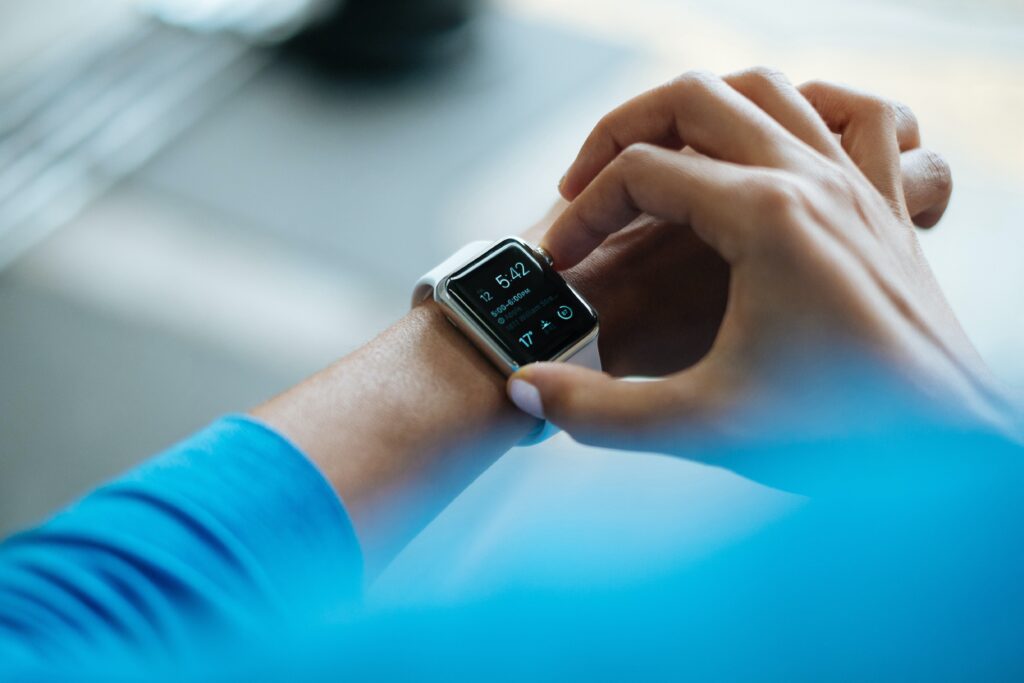
Are you looking for the quickest and most effective ways to shed those extra pounds? Look no further! Introducing “10 Fastest Ways to Lose Weight for Woman,” the ultimate guide to achieving your weight loss goals in no time. Packed with tried and tested strategies, this product provides you with an array of practical tips, expert advice, and valuable insights specifically tailored to women. Say goodbye to endless hours at the gym and restrictive diets, and say hello to a healthier, more confident you!
1. Exercise regularly
Regular exercise is a crucial component of any weight loss journey. Not only does exercise help burn calories, but it also improves overall health and boosts your mood. There are several types of exercises that you can incorporate into your routine to aid in weight loss:
1.1 Cardiovascular exercises
Cardiovascular exercises, also known as cardio, are exercises that increase your heart rate and make you breathe harder. These exercises are effective in burning calories and can include activities such as running, cycling, swimming, or using cardio equipment like treadmills or ellipticals. Aim for at least 150 minutes of moderate-intensity cardio exercise per week, or 75 minutes of vigorous-intensity exercise.
1.2 Strength training
Strength training is another crucial component of weight loss. Building lean muscle mass helps increase your metabolism, which means you burn more calories even at rest. Include strength training exercises such as weightlifting, resistance band workouts, or bodyweight exercises like push-ups or squats. Aim for at least two to three days of strength training per week, targeting all major muscle groups.
1.3 High-intensity interval training
High-intensity interval training (HIIT) involves short bursts of intense exercise followed by short recovery periods. HIIT workouts are highly effective in burning calories and improving cardiovascular fitness. These workouts can be done with various exercises such as running, jumping jacks, or burpees. Incorporate HIIT workouts into your routine two to three times per week for maximum results.
1.4 Pilates or yoga workouts
Pilates and yoga workouts can provide a holistic approach to weight loss by improving strength, flexibility, and mindfulness. These low-impact exercises help to tone your muscles, improve posture, and increase body awareness. Consider incorporating regular Pilates or yoga sessions into your routine to complement your cardiovascular and strength training exercises.
2. Follow a balanced and healthy diet
Exercise alone is not enough to achieve weight loss. It is essential to follow a balanced and healthy diet that supports your goals. Here are some key tips for a healthy diet:
2.1 Include a variety of fruits and vegetables
Fruits and vegetables are an excellent source of essential vitamins, minerals, and fiber. Incorporate a variety of colorful fruits and vegetables into your meals and snacks to ensure you are getting a wide range of nutrients. Aim for at least five servings of fruits and vegetables per day.
2.2 Choose lean protein sources
Protein is an important macronutrient that aids in muscle growth and repair. Opt for lean protein sources such as skinless chicken or turkey, fish, tofu, beans, or lentils. These options are lower in saturated fats and calories compared to fatty meats like red meat or processed meats like sausages.
2.3 Opt for whole grains and complex carbohydrates
Choose whole grains like brown rice, quinoa, whole wheat bread, or oats over refined grains. Whole grains provide more nutrients and fiber, helping you feel fuller for longer. Additionally, opt for complex carbohydrates like sweet potatoes, legumes, or whole fruits instead of refined carbohydrates like white bread or sugary cereals.
2.4 Limit processed and sugary foods
Processed and sugary foods are often high in calories and low in nutrients. They can contribute to weight gain and hinder your weight loss progress. Limit your intake of processed snacks, sugary beverages, desserts, and fast food. Instead, opt for whole, unprocessed foods as much as possible.

3. Control portion sizes
Controlling portion sizes is an effective strategy to manage calorie intake and achieve weight loss. Here are some tips to help you control portion sizes:
3.1 Use smaller plates and bowls
Using smaller plates and bowls can trick your brain into thinking you’re eating more than you actually are. Choose smaller dishware to help control portion sizes and prevent overeating.
3.2 Measure your food
Measuring your food with measuring cups or a food scale can provide a more accurate representation of portion sizes. It helps you stay mindful and aware of how much you are eating.
3.3 Practice mindful eating
Mindful eating involves paying full attention to your food, savoring each bite, and being aware of your body’s hunger and fullness cues. Slow down, chew your food thoroughly, and listen to your body’s signals to prevent overeating.
3.4 Limit eating out
Dining out frequently can make it challenging to control portion sizes, as restaurant meals are often larger and higher in calories compared to homemade meals. Limit eating out and prioritize cooking meals at home, where you have full control over ingredients and portion sizes.
4. Stay hydrated
Staying hydrated is essential for overall health and can support weight loss efforts. Here’s how you can ensure you stay hydrated:
4.1 Drink plenty of water
Water should be your primary beverage of choice. It has zero calories, hydrates your body, and can help promote a feeling of fullness. Aim to drink at least eight glasses of water per day, or more if you engage in intense physical activity or live in a hot climate.
4.2 Replace sugary beverages with healthier options
Sugary beverages like soda, fruit juices, or energy drinks can contribute to excess calorie intake. Replace these drinks with healthier options such as flavored water, herbal tea, or unsweetened beverages like sparkling water.
4.3 Consume water-rich foods
In addition to drinking water, you can also increase your hydration levels by consuming water-rich foods. Include foods like watermelon, cucumbers, tomatoes, or leafy greens, which have high water content and can help keep you hydrated.

5. Get enough sleep
Adequate sleep plays a crucial role in weight management and overall health. Follow these tips to ensure you get enough quality sleep:
5.1 Aim for 7-9 hours of quality sleep
On average, most adults need between 7 and 9 hours of sleep per night to function optimally. Make sleep a priority and establish a regular sleep schedule to ensure you get enough rest each night.
5.2 Establish a bedtime routine
Create a relaxing bedtime routine to signal to your body that it’s time to wind down. Avoid stimulating activities or electronic devices before bed, and instead, engage in calming activities such as reading a book, taking a warm bath, or practicing relaxation exercises.
5.3 Create a comfortable sleep environment
Make your bedroom a sleep-friendly environment by keeping it cool, dark, and quiet. Invest in a comfortable mattress, pillows, and bedding to ensure optimal comfort during sleep.
5.4 Avoid electronic devices before bedtime
The blue light emitted by electronic devices can disrupt your sleep patterns. Avoid using smartphones, tablets, or laptops for at least an hour before bed to promote better sleep quality.
6. Manage stress levels
Stress can contribute to weight gain and hinder weight loss efforts. It is important to manage stress levels effectively. Here are some strategies to help you reduce stress:
6.1 Practice relaxation techniques
Engaging in relaxation techniques such as deep breathing, meditation, or yoga can help reduce stress levels. Find activities that help you relax and incorporate them into your routine.
6.2 Engage in regular physical activity
Physical activity is not only essential for weight loss but also helps reduce stress levels. Engage in regular exercise, whether it’s cardiovascular exercises, strength training, or activities like dancing or hiking that you enjoy.
6.3 Seek support from friends and family
Don’t hesitate to reach out to your loved ones for support during times of stress. Talking things out or seeking advice can help alleviate stress and provide emotional support.
6.4 Consider therapy or counseling
If stress becomes overwhelming or starts affecting your daily life, consider seeking professional help. Therapy or counseling can provide valuable tools and techniques to manage stress effectively.

7. Monitor your calorie intake
Monitoring your calorie intake is an effective way to become more aware of the foods you consume and the energy they provide. Here are some strategies to help you monitor your calorie intake:
7.1 Track your food and beverage consumption
Keep a food diary or use a mobile app to track your daily food and beverage consumption. This can help you identify any patterns, spot potential areas for improvement, and stay accountable to your goals.
7.2 Use a calorie calculator or mobile app
Utilize a calorie calculator or mobile app to determine your daily calorie needs based on factors such as age, weight, height, and activity level. This can serve as a guideline to help you make informed decisions about your food choices.
7.3 Be aware of hidden calories
Hidden calories can sneak into your diet through sauces, dressings, condiments, and beverages. Read labels and be mindful of portion sizes to avoid consuming excess calories unintentionally.
7.4 Cook meals at home
Cooking meals at home gives you control over ingredients and portion sizes, making it easier to manage your calorie intake. Experiment with new recipes and cooking techniques to make healthy and delicious meals.
8. Stay consistent
Consistency is key in achieving and maintaining weight loss. Here are some tips to help you stay consistent in your efforts:
8.1 Maintain a regular exercise routine
Stick to a regular exercise routine that includes a mix of cardiovascular exercises, strength training, and other activities you enjoy. Consistency will yield the best results and make exercise a habit.
8.2 Stick to a balanced diet
Avoid crash diets or extreme measures that promise quick results. Instead, focus on following a balanced diet that includes a variety of nutrients. Make sustainable changes to your eating habits that you can maintain in the long term.
8.3 Avoid crash diets or extreme measures
Crash diets and extreme measures are not sustainable and can be harmful to your health. Rapid weight loss often results in muscle loss and a slower metabolism. Focus on healthy, gradual weight loss instead.
8.4 Focus on long-term lifestyle changes
Weight loss should not be viewed as a short-term goal but as a long-term commitment to a healthier lifestyle. Embrace permanent lifestyle changes that include regular exercise, a balanced diet, and a positive mindset.
9. Incorporate intermittent fasting
Intermittent fasting has gained popularity as an effective weight loss strategy. However, it may not be suitable for everyone. Here are some considerations if you choose to incorporate intermittent fasting:
9.1 Choose a fasting schedule that suits you
There are various intermittent fasting schedules to choose from, such as the 16/8 method or alternate-day fasting. Select a fasting schedule that aligns with your lifestyle and preferences.
9.2 Start with shorter fasting durations
If you’re new to intermittent fasting, start with shorter fasting durations and gradually increase the fasting window. It allows your body to adjust and prevents potential side effects.
9.3 Stay hydrated during fasting periods
During fasting periods, make sure to stay hydrated by drinking water or herbal tea. It helps curb hunger and keeps your body hydrated.
9.4 Consider professional guidance
If you have any underlying health conditions or concerns, it’s best to consult with a healthcare professional or registered dietitian before starting intermittent fasting. They can provide guidance tailored to your specific needs.
10. Seek professional guidance
If you’re struggling with weight loss or have specific health concerns, seeking professional guidance can be beneficial. Here are some professionals who can provide assistance:
10.1 Consult with a registered dietitian
A registered dietitian can assess your individual needs, create a personalized meal plan, and provide guidance on nutrition. They can also help you navigate any dietary restrictions or allergies.
10.2 Work with a personal trainer
A personal trainer can design a workout program tailored to your fitness level, goals, and any limitations you may have. They will ensure you perform exercises correctly and safely.
10.3 Consider joining a weight loss support group
Joining a weight loss support group can provide emotional support, accountability, and motivation. Sharing experiences and learning from others can make your weight loss journey more manageable.
10.4 Discuss any underlying health conditions with a doctor
If you have any underlying health conditions or concerns, consult with a healthcare professional. They can determine if there are any specific considerations or modifications needed for your weight loss journey.
By following these ten fastest ways to lose weight as a woman, you can achieve your weight loss goals in a healthy and sustainable manner. Remember to prioritize your overall well-being, make gradual changes, and stay consistent in your efforts. With dedication and patience, you can accomplish your desired weight loss and enjoy a healthier, happier life.